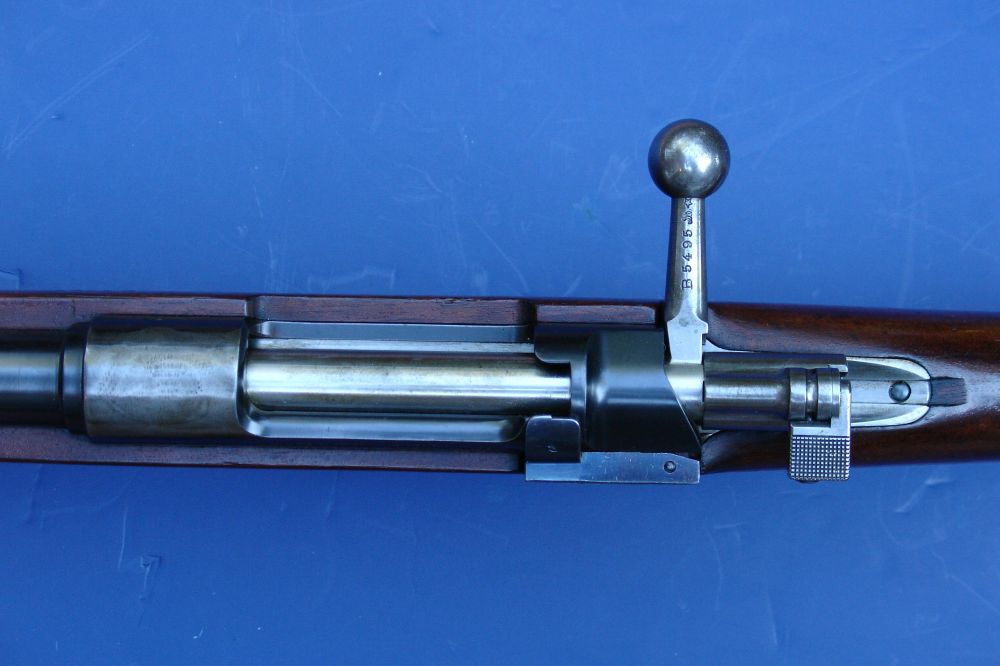


It became known as the 1889 Belgian Mauser, 1891 Argentine Mauser, and 1890 Turkish Mauser. The Mauser Model 1889 is a bolt-action rifle of Belgian origin. Iron sights adjustable to 1,900 m (2,078 yd) Reassemble rifle in reverse.Belgian Mauser rifle M1889, Turkish Mauser rifle M1890, Argentinean Mauser rifle M1891, Belgian Mauser cavalry carbine M1889, Belgian Mauser Engineer carbine M1889, Argentinean Mauser cavalry carbine M1891, Argentinean Mauser Engineer carbine M1891, Remove the trigger pin (16) and lift out the trigger (17). Sear spring (14) will drop away at this point. Do not remove handguard (62) unless necessary as it is held in place with carefully twisted copper wire.Ħ Drift out sear pin (15) and remove sear (13) with trigger assembly attached. Entire barrel and receiver assembly may now be separated from stock (61). Remove rear and front guard screws (23 and 28 respectively) and lift away trigger guard (22). Loosen front swivel screw (41), depress lower band spring (44), and remove lower band (42). Depress upper band spring (46) with thumb and slide upper band (45) off front end of barrel (1). Follower assembly may now be removed from magazine.ĥ Unscrew and remove cleaning rod (49). Using a small pick, push follower arm (35) pivoting leg up into magazine. Depress magazine latch (25-arrow, lower left) and remove the magazine (30).Ĥ Remove follower screw (29) and swing floorplate (32) down. Give magazine catch (27-arrow, upper right) a half-turn counterclockwise. In reassembly, take care to screw on cocking piece so that its rear surface is flush with the outer rear edge of the firing pin.ģ Turn rifle over. Remove safety detent screw (57) and carefully tap out safety detent (55) and safety detent spring (56). allow bolt sleeve to move up gradually under mainspring pressure, and remove bolt sleeve and mainspring from firing pin. Hold firing mechanism vertically with point of firing pin on a hardwood block, and press down on safety with thumb until bolt sleeve clears cocking piece. Pull bolt stop (II) to the left and remove bolt.Ģ Engage nose of cocking piece (60) on edge of bench and pull bolt away until a coin can be inserted between cocking piece and bolt sleeve (53. Upper band spring Front plate Front plate screw (2) Cleaning rod Cleaning rod stopġ Remove bolt assembly from receiver by rotating both safety (54) and then bolt (52) counterclockwise and withdrawing rearward as far as assembly will go. This design feature was carried over to later Mauser bolt-action military rifles. Inletting cuts in the stock fore-end for the barrel shoulders are relieved to prevent binding of the barrel as it elongates from heating in rapid fire.

The stepped barrel contour of the Turkish Model 1890 rifle was retained in the Argentine Model 1891 version. There is no auxiliary bolt safety lug as in the later Mauser Model 1898 action. The Argentine Model 1891 rifle was essentially identical in design to the earlier Turkish Model 1890 rifle and was chambered for the same cartridge. Later Argentine Service ammunition was loaded with 154-gr. round-nose bullet to a muzzle velocity of approximately 2060 feet per second. Mauser cartridge loaded originally with 212-gr. These arms were chambered for theħ.65 mm. Additional arms of this pattern were made later for Argentina by Deutsche Waffen und Munitionsfabriken (DWM) in Berlin. The Argentine Model 1891 Mauser military rifle was adopted in that year, and the initial production contract calling for 180,000 rifles and 30,000 carbines was granted to Ludwig Loewe & Co.


 0 kommentar(er)
0 kommentar(er)
